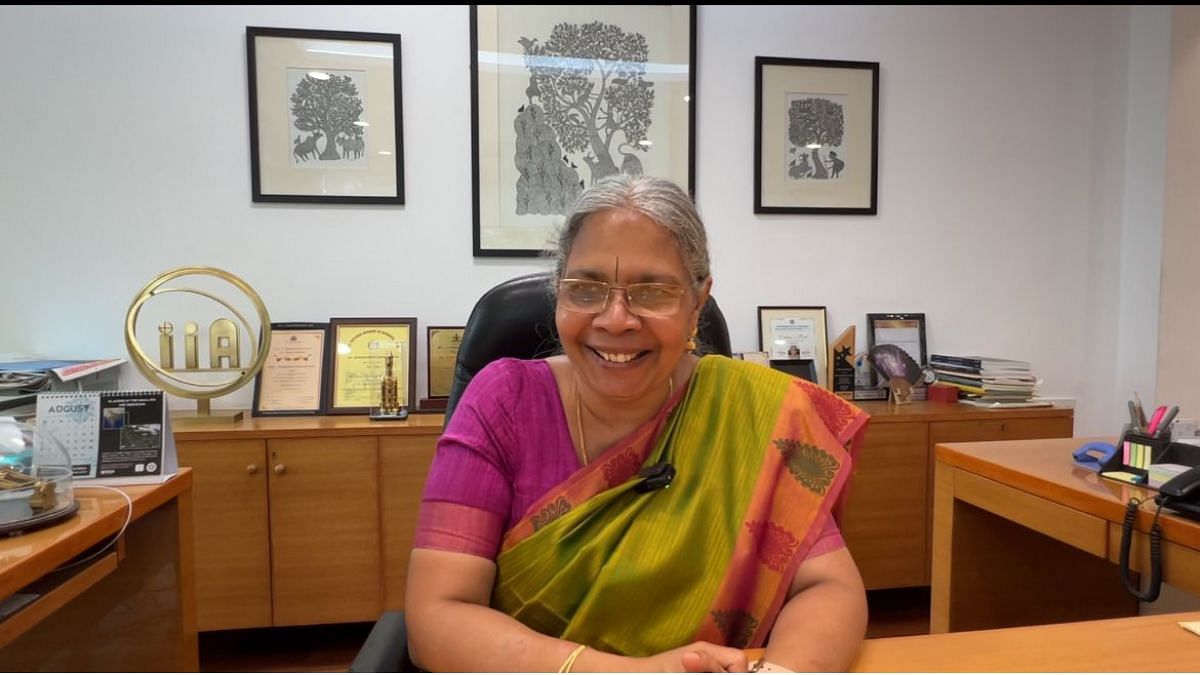Bengaluru: Among the very first cohort of Vigyan Shri awardees for science is Dr. Annapurni Subramaniam. She was recognised in the category of ‘Space Sciences and Technology’, and immediately stands out as the only woman scientist on the list, something that has not escaped her notice.
The Vigyan Shri is one of the four categories under the Rashtriya Vigyan Puraskar — the new national awards instituted this year to recognise contributions in science and technology. The first set of awards is to be presented this Friday.
Subramaniam is renowned for her work in stellar physics, and currently serves as the director of Indian Institute of Astrophysics (IIA) in Bengaluru. Under her guidance, the institute is involved in building a number of cutting-edge telescopes and instruments, both on the ground and for future space missions. She has been involved in the instrumentation of both the AstroSat and the Aditya-L1 missions.
ThePrint caught up with Subramaniam for a short Q&A about her work, astronomy in India, and the significance of the Vigyan Shri award.
Also Read: Designs for Chandrayaan-4 & 5 ready, 1st ‘Gaganyatri’ flight by mid-2025, says ISRO chief Somanath
Thank you for joining us today! Can you tell us about your work?
I work on astronomy, astrophysics and related areas, and I conduct research using ground-based and space-based instruments like telescopes. I have worked extensively with ground-based instruments. Starting from my PhD days (1996), I have used the Kavalur Observatory (now Vainu Bappu Observatory, at Tirupattur, Tamil Nadu) extensively, and that gave me a lot of understanding regarding how to use instruments and do research on stellar physics and star clusters.
I continued to study the stellar populations in nearby galaxies. When AstroSat was launched (2015), I worked on the Ultraviolet Imaging Telescope (UVIT), was a calibration scientist for it, and carried out the performance verification phase for it.
I also proposed the next generation UV optical imaging telescope based on the announcement of opportunity, as we have already created a pool of resources, including human resources for space instrumentation.
I still carry out my research on specific objects which emit copious amounts of radiation in the UV range. I detect them, study their formation scenarios, and understand how they contribute to stellar physics and physics of galaxies.
What is the future of astrophysics and astronomy like in India?
Space-based instruments have given us a unique opportunity to study objects in wavelengths which cannot be detected on ground. We still carry out optical and sometimes infrared observations, but for UV and longer wavelengths, we need to go to space, outside of the atmosphere. AstroSat looks at the same object using multiple wavelengths, and this helps us understand complex physical mechanisms that generate energy photons (minute energy packets of electromagnetic radiation) across various wavelengths.
With that capability, our research capacity increases as we can fill in many gaps going forward. In earlier days, Indian astronomy was stronger in theoretical sciences and mathematics. But today, we have the capability to build instruments, deploy them, collect data, do the analysis and more. So, we are in a much better position.
The younger generation is much more interested in doing space-based astronomy. Space science is getting more and more interesting, and with that awareness, students are now wanting to do projects. There is a growth of amateur astronomers and astrophotographers who have access to new cameras, beyond mainstream astronomy.
India is poised to do a lot of things in a variety of fields, both in the mainstream, as well as interesting things for students, amateurs, professionals, and citizens.
As the director of IIA, can you tell us about the projects the institute is involved in?
IIA’s origin goes back to an observatory set up in Nungambakkam in Madras in 1786. It was used to study solar physics. Key observations from here even helped identify helium as a new gas, and the fundamental observations made here created an impact.
In 1971, it was moved to Kodaikanal, and thus, we trace our 200-year-old history in studying astrophysics.
Today, we have the Kavalur Observatory and the Nainital Observatory, which have been operating for 50 years now, and three in Leh: the field station in Leh, the Hanle Observatory, and a solar telescope being set up on the banks of the Pangong Tso. So, we have a rich legacy of observations to be carried on. We have more telescopes coming, as well as space telescopes to be operated with ISRO. Today, Hanle is a dark sky reserve (a protected area that reduces or alleviates light pollution to preserve the night sky) to protect the sky, wildlife, and to promote astro-tourism.
All of this gives us a great niche and legacy in solar physics.
Congratulations on being awarded the Vigyan Shri! How does it feel to win the award? How significant is the recognition?
I am very happy to be one of the recipients. I am the only woman to be awarded the Vigyan Shri this year, but at least there is representation. I look forward to more women being given this award in the future.
The details are yet to be known but overall, the government has done a good thing by having a streamlined award along the lines of other areas, like Khel Ratna for sports. People pursue science because they are passionate about it. They pursue it not for money or awards, but for their own satisfaction. But if recognition comes, we are very happy about it.
(Edited by Radifah Kabir)
Also read: Mars may have oceans’ worth of water underground, but this doesn’t mean it’s ready to be colonised

